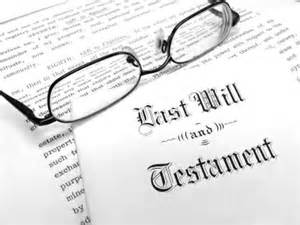Financial Planning’s article, “How to invest trust assets,”provides a good overview of commonly used trusts and general suggestions about which types of investments are appropriate for different kinds of trusts. Investing assets is a very individual matter, and recent changes to the tax law must be taken into consideration in addition to the current market conditions and available investment products.
Family (also a Bypass or Credit Shelter) Trust: This is a very common trust in estate planning. It shelters the amount of exemption from tax available on death. Usually assets are held in this trust to benefit the surviving spouse, although other relatives can be beneficiaries as well. When the surviving spouse dies, the assets pass to heirs without being taxed in that individual’s estate. That’s why it’s called a “bypass” trust; it jumps over the surviving spouse’s taxable estate.
However, with recent changes to the tax laws raising the estate tax exemption to almost $5.5 million ($5.49 million for 2017, given the inflation adjustment), the surviving spouse’s estate may no longer have estate tax liability. If that’s the case, then growth inside the trust will result in higher income tax costs to heirs. If this happens, one might consider moving assets out of the trust through permissible distributions or even terminating the trust if allowed.
QTIP Marital Trust: These trusts are intended to qualify for the estate tax marital deduction and obligate the payment of income at least annually to the surviving spouse, who is required to be the sole beneficiary. The income distribution requirement will affect the choice of investment allocation and thought should be given to protecting the trust and growing it for remainder beneficiaries. This is especially important if they are children from a prior marriage and a husband has formed the trust for his second wife.
The assets of a QTIP trust will typically be included in the spouse’s estate, meaning if his or her estate isn’t expected to be taxable, assets in the trust will receive a step-up in basis at death with no offsetting tax cost. If that estate is expected to be subject to an estate tax, you should review that risk with an experienced estate planning attorney and financial professional.
Irrevocable Life Insurance Trusts (ILIT): These days, life insurance is commonly held in trusts that own other substantial assets. One should determine the cash flow needed to maintain current and anticipated life insurance with any excess being invested under a longer-term plan. At the insured’s death, the proceeds have to be invested in a manner that fits the post-death trust objectives.
Revocable Living Trusts: These trusts are controlled by the trustmaker who created the trust investments, and as a result, the allocations are up to him or her. However, if the trustmaker becomes incapacitated and a successor trustee takes over, that person will probably be subject to the standards of a prudent investor and state law. If that is the case, maintaining the trustmaker’s investment plan might not work. Be sure the trustee understands their responsibilities. In the event the trustmaker steps down as trustee, a new investment plan may be needed.
At Family Estate Planning Law Group, we strongly encourage our clients to hold a Family Care Meeting to explain the roles and responsibilities to trustees and other fiduciaries. Our clients find comfort in knowing that as a result of the meeting, their loved ones understand their wishes, their estate plan and the responsibilities they’ve asked them to fulfill.
Dynastic (or Grandchildren’s) Trusts: This trust was traditionally used to pay for college and was invested in a manner to achieve that goal. But with more 529 plans, dynastic trusts are rarely used for this reason. Now, they’re usually designed to provide long-term growth for future uses, such as providing cash flow to grandchildren and future generations. It’s important to note that these trusts may allow the trust to own personal use assets. If so, that could be relevant to the investment timeline and risk profile.
GRATs (or Grantor Retained Annuity Trusts): In the past, GRATS were structured for short-term investments with highly detailed asset allocation. The trust would contain only one stock or one type of asset. If it grew, it would be “immunized” by swapping in cash for the highly appreciated assets. When the GRATs ended, the process would be resumed, which was referred to as “cascading” GRATs.
However, the political tide may be turning against this type of planning. In future, it may not be possible to re-GRAT assets sequentially. Planning for GRATs today needs to take a longer-term approach. That might mean including a diversified portfolio to shift performance in excess of the current low interest rates out of the estate over the term of the GRAT. This would be a very different investment approach than in the past.
Trust investing requires a coordinated team effort between your estate planning attorney, financial advisor and tax professional to ensure that all of the parts work smoothly together towards the same end. That’s why Family Estate Planning Law Group coordinates with our clients’ financial professionals and other trusted advisors. By working together to ensure proper planning and ongoing alignment of assets with the plan, we help ensure your estate plan will work the way you intended.
For more information, explore our website and contact us to schedule your consultation today!
Reference: Financial Planning (August 1, 2016) “How to invest trust assets”






